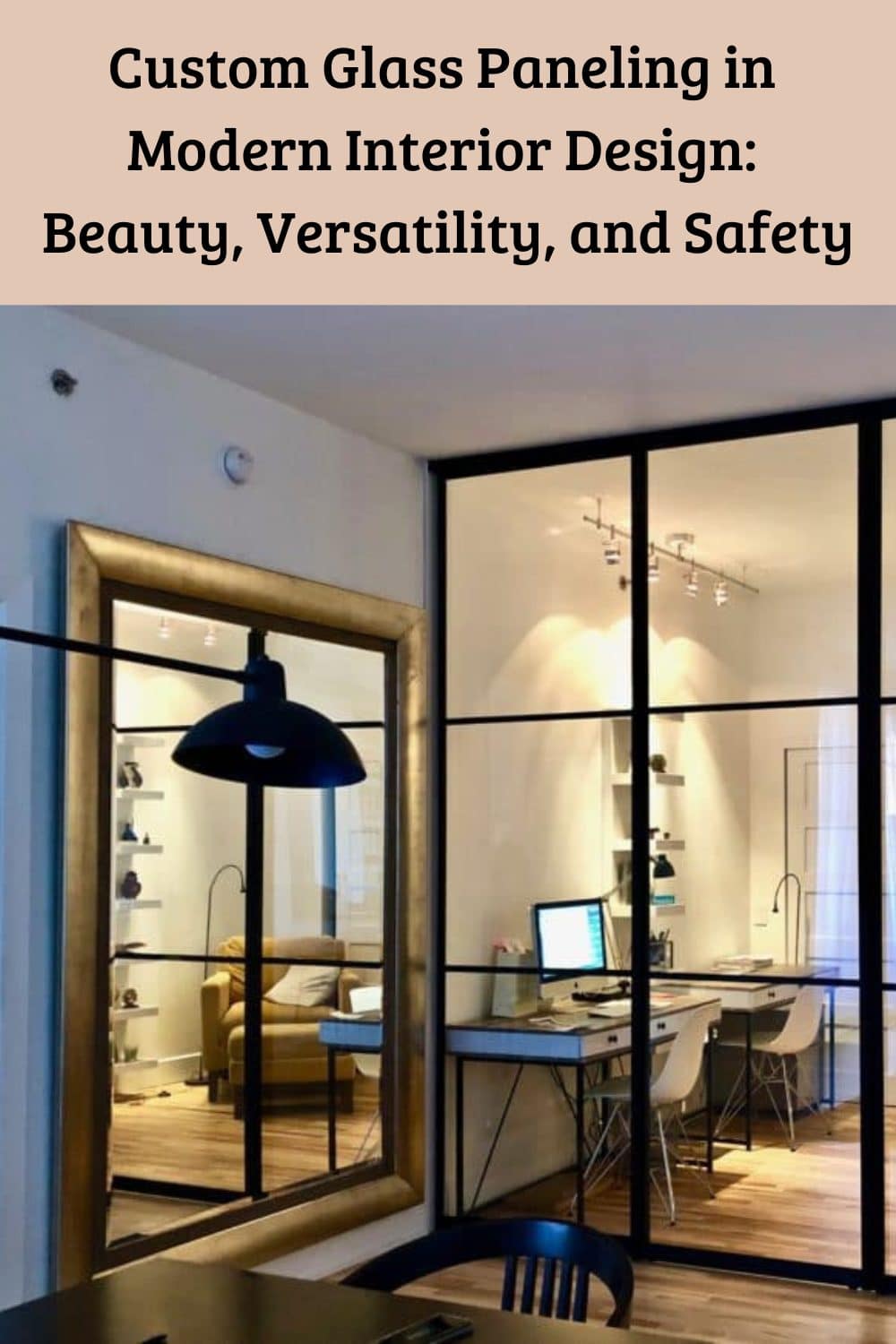Custom interior glass wall panels have become a captivating and versatile element in modern interior design. The beauty of glass lies in its transparency and the numerous ways it can be customised to enhance spaces with elegance and sophistication.
This article delves into the various production styles, including etched, carved, acid-textured, moulded, slumped, and stacked glass. Furthermore, it explores the main applications of custom glass panelling, such as murals and backsplashes, partitions and glass walls, glass tables, and kitchen cabinet inserts. Additionally, we will discuss the importance of safety standards, highlighting the necessity for tempered and laminated glass to ensure aesthetic appeal and security.
Styles of Production
Etched Glass
Etching involves creating intricate designs on the surface of the glass by using chemicals or abrasive materials. The result is a frosted appearance that diffuses light and offers varying levels of privacy. Etched glass panels are commonly utilised in partitions and glass walls to allow natural light to permeate while maintaining visual separation.
Carved Glass
Carving is a meticulous process of engraving intricate patterns and textures onto the glass surface. This technique adds depth and dimension to the glass, creating a stunning interplay of light and shadow. Carved glass panels are often incorporated into doors, windows, or wall art, becoming focal points in modern interior designs.
Acid-Textured Glass
Acid-texturing is a chemical process that alters the glass surface, creating captivating patterns and textures. This technique is ideal for achieving artistic and unique designs on glass panels, thus making it a popular choice for decorative applications like shower enclosures and room dividers.
Moulded Glass
Moulded glass is shaped by heating it until it becomes pliable and then pressing it into a mould to achieve a specific form or texture. This technique allows for the creation of intricate 3D patterns. It is frequently used in glass tables, decorative art pieces, and architectural elements.
Slumped Glass
Slumping involves heating the glass until it becomes soft and allowing it to sink into or drape over a mould to obtain curved or textured shapes. Slumped glass panels add a touch of fluidity and organic aesthetics to architectural installations, such as decorative partitions and glass walls.
Stacked Glass
Stacking multiple layers of glass with varying colours or patterns creates visually striking effects. Stacked glass panels often create stunning murals and backsplashes, which transform ordinary walls into extraordinary art installations.
Main Applications
Murals and Backsplashes
Custom glass murals and backsplashes offer an exceptional opportunity to infuse artistic flair into interior spaces. Designers can collaborate with artists to create bespoke glass panels that showcase unique patterns, colours, and designs. Glass murals and backsplashes mesmerise focal points in living spaces, kitchens, and commercial establishments.
Partitions and Glass Walls
Custom glass partitions and walls revolutionise the concept of interior spatial design. With a vast array of production styles available, designers can create tailor-made partitions that range from fully transparent to semi-private. Glass walls are increasingly popular in offices, hotels, and residential spaces, allowing natural light to flow and creating a sense of openness.
Glass Tables
Custom glass tables are elegant additions to modern interior design. Designers can play with different styles of production to create unique tabletops that suit the overall theme of the space. Glass tables bring an air of sophistication to dining rooms, living rooms, and offices.
Kitchen Cabinet Inserts
Custom glass inserts in kitchen cabinets offer an opportunity to showcase delicate dishware and add a touch of openness to the kitchen space. The various production styles can be utilised to match the kitchen’s aesthetic, enhancing the overall design and functionality.
The Need for Safety Standards
As captivating as custom glass panelling is, safety must always be paramount. Traditional annealed glass poses severe risks in case of breakage, as it shatters into sharp, hazardous shards. To ensure the safety of occupants, tempered and laminated glass are essential.
Tempered Glass
Tempering involves subjecting the glass to intense heat and then rapidly cooling it, resulting in increased strength and resilience. If tempered glass does break, it shatters into small, granular pieces, significantly reducing the risk of injury. Tempered glass is a crucial safety feature in glass walls, doors, and tables.
Laminated Glass
Laminated glass consists of two or more layers of glass bonded with a durable interlayer, typically polyvinyl butyral (PVB). In the event of breakage, the interlayer holds the glass fragments in place, preventing them from scattering and minimising the risk of injury. Laminated glass is commonly used in glass floors, skylights, and hurricane-resistant windows.
Conclusion
Custom glass panelling has brought a new dimension to modern interior design, captivating designers and architects with unparalleled beauty and versatility. With various styles of production, including etched, carved, acid-textured, moulded, slumped, and stacked glass, the creative possibilities are limitless. Custom glass panelling has become integral to contemporary interior design, from awe-inspiring murals and backsplashes to functional glass walls and elegant glass tables.
However, as designers explore the artistic potential of glass, safety must always be at the forefront. Tempered and laminated glass ensures that aesthetic appeal and security coexist harmoniously in modern interior spaces. Custom glass panelling continues to push the boundaries of imagination, transforming ordinary spaces into extraordinary works of art – Interior Glass Wall Panels.





Leave a Reply